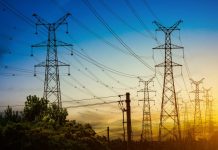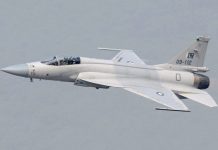ISLAMABAD: The government is developing a three-year rolling strategy to capitalize on the economic commonalities between Pakistan and China under CPEC, reports WealthPK.
According to an official brief of the government, a copy of which is available with WealthPK, within the framework of the three-year strategy, the role of the Board of Investment’s (BOI) is to attract efficiency-seeking foreign investments that will help in knowledge transfer and export promotion.
The brief says the country-wise foreign direct investment (FDI) data confirms that China has the largest share of foreign investment in Pakistan; however, the FDI has decreased by 29.27% in the last two financial years due to multiple factors.
According to the official figures, the FDI inflow during July-June FY2022 was recorded at $706.3 million, while the outflow was $174.7million and net FDI was recorded at $531.6 million. The FDI inflow during July-June FY21 was calculated at $1,083 million, outflow $331.4 million and net FDI $751.6 million.
Data on the sector-wise Chinese investment in Pakistan showed that during FY2022, net FDI in the power sector totalled $541.27 million, while in the electrical machinery, construction, electronics, rubber and rubber products and storage facilities sectors, it was recorded at $28.21 million, $19.37 million, $10.62 million, $9.34 million and $3.87 million respectively.
In FY2021, net FDI in the power sector reached $605.72million, while in the electrical machinery, construction, electronics, rubber and rubber products and storage facilities sectors, it was recorded at $108.37 million, $18.28 million, $-2.75 million, $16.90 million and $0 million respectively.
The report further highlights that the decrease in Chinese investments during the last two financial years was due to various reasons, including but not limited to Covid-19 outbreak that caused a sharp decline in the global economic activity.
As the majority of Chinese investments fall within CPEC ambit, economic disruptions and social restrictions caused by Covid-19 also affected the pace of CPEC, thus impacting the overall net FDI.
The report says the decrease in Chinese investments in the last two years is mainly due to the conclusion of CPEC Phase-I, which has overall impacted the outlay of Chinese investments in Pakistan. Most of the early harvest projects under the first phase of CPEC related to power and infrastructure have been completed.
The report says CPEC is now set to enter the second phase which focuses on industrial cooperation and is a long-term endeavour dependent on industrialization through industrial relocation from China, particularly in the Special Economic Zones (SEZs).
However, the report adds, it is very encouraging that with the operationalization of most SEZs in the past two years and increase in investor interest to establish industry therein, many Chinese-origin companies and other investors have entered SEZs as enterprises thereby committing realization of investment within two years as is stipulated in the SEZ Law.
The decrease in Chinese investments in the last two years is also due to the decrease in the FDI inflows in the manufacturing sector. Electrical machinery (-73.96 %) and rubber and rubber products (-44.73 %) were the top two sectors with major decline.
It may be noted that due to Covid-19, the manufacturing sector has been affected globally.
According to an official document recently issued by the government, currently 39 projects worth around $25 billion related to energy, transport infrastructure, and industrial cooperation have either been completed or are in the implementation stage.
Out of these 39 projects, 18 projects related to power production, transport infrastructure, and socioeconomic development have been completed with a total cost of $15.7 billion, while 21 projects are in diffident stages of implementation with an estimated cost of around $9.3 billion.
Under CPEC, work on the following projects in the energy sector has already been completed.
These projects include 1,320MW Sahiwal Coal-fired Power Plant, 1,320MW Port Qasim Coal-fired Power Plant, 1,320MW China-Hub Coal-fired power plant, 660MW Engro Thar Power & Mine, 400MW Quaid-i-Azam Solar Park, 100MW UEP Wind Farm, 100MW Three Gorges Wind Power, 50MW Sachal Wind Farm, 50MW Hydro China Dawood Wind, and HVDC+660KV Matiari-Lahore Transmission Line.
In transport and infrastructure sectors, the projects which have already been completed are Multan-Sukkur Motorway (M5), Orange Line Metro Train Project, Karakoram Highway Phase-II Havelian-Thakot Section, Cross Border Optical Fibre Cable, Digital Terrestrial Multimedia Broadcast (DTMB), Gwadar Smart Port City Master Plan, Gwadar Port and Free Zone and a project related to the social development sector.
-INP






